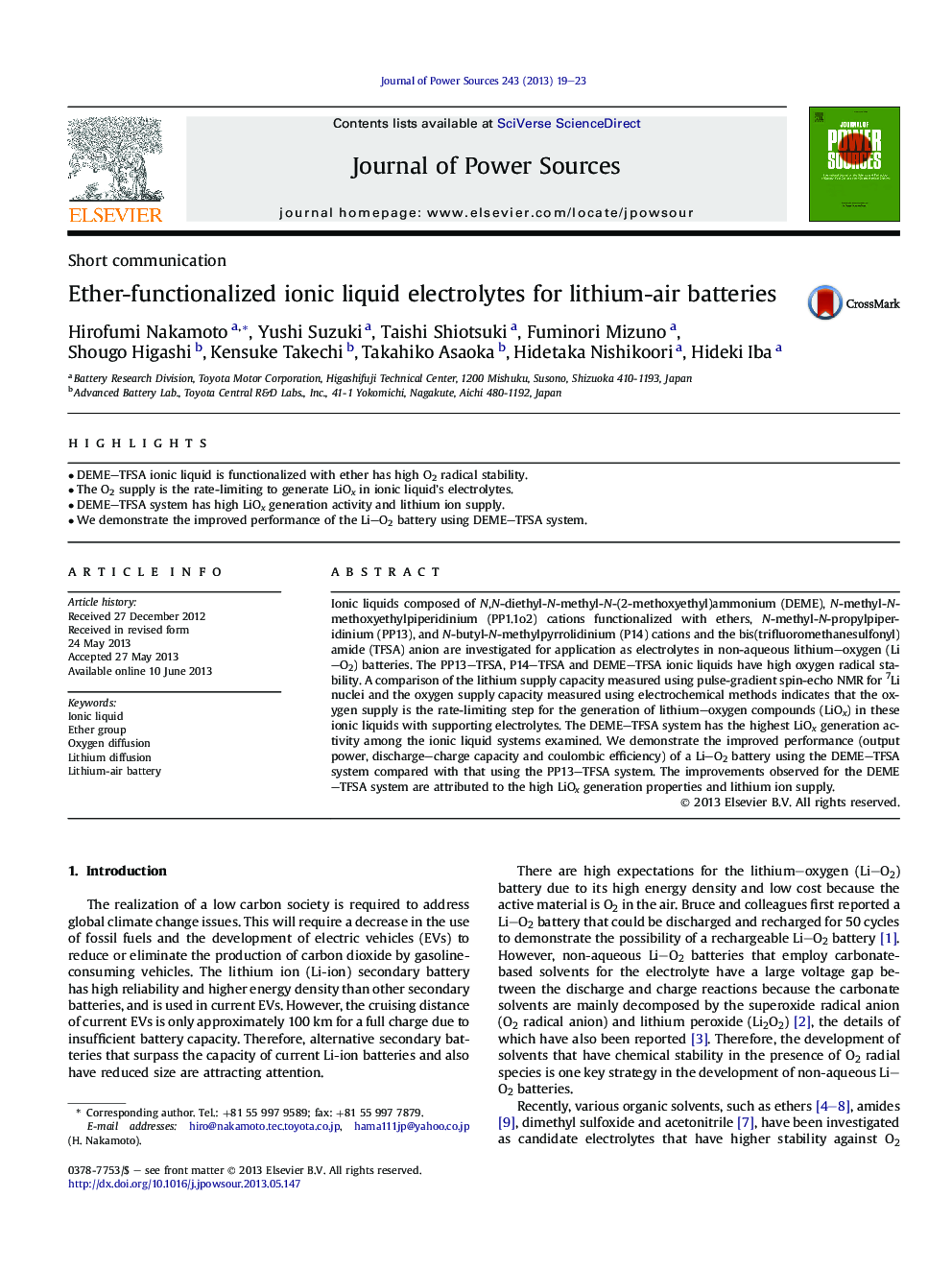| Article ID | Journal | Published Year | Pages | File Type |
|---|---|---|---|---|
| 7740168 | Journal of Power Sources | 2013 | 5 Pages |
Abstract
Ionic liquids composed of N,N-diethyl-N-methyl-N-(2-methoxyethyl)ammonium (DEME), N-methyl-N-methoxyethylpiperidinium (PP1.1o2) cations functionalized with ethers, N-methyl-N-propylpiperidinium (PP13), and N-butyl-N-methylpyrrolidinium (P14) cations and the bis(trifluoromethanesulfonyl)amide (TFSA) anion are investigated for application as electrolytes in non-aqueous lithium-oxygen (Li-O2) batteries. The PP13-TFSA, P14-TFSA and DEME-TFSA ionic liquids have high oxygen radical stability. A comparison of the lithium supply capacity measured using pulse-gradient spin-echo NMR for 7Li nuclei and the oxygen supply capacity measured using electrochemical methods indicates that the oxygen supply is the rate-limiting step for the generation of lithium-oxygen compounds (LiOx) in these ionic liquids with supporting electrolytes. The DEME-TFSA system has the highest LiOx generation activity among the ionic liquid systems examined. We demonstrate the improved performance (output power, discharge-charge capacity and coulombic efficiency) of a Li-O2 battery using the DEME-TFSA system compared with that using the PP13-TFSA system. The improvements observed for the DEME-TFSA system are attributed to the high LiOx generation properties and lithium ion supply.
Related Topics
Physical Sciences and Engineering
Chemistry
Electrochemistry
Authors
Hirofumi Nakamoto, Yushi Suzuki, Taishi Shiotsuki, Fuminori Mizuno, Shougo Higashi, Kensuke Takechi, Takahiko Asaoka, Hidetaka Nishikoori, Hideki Iba,
